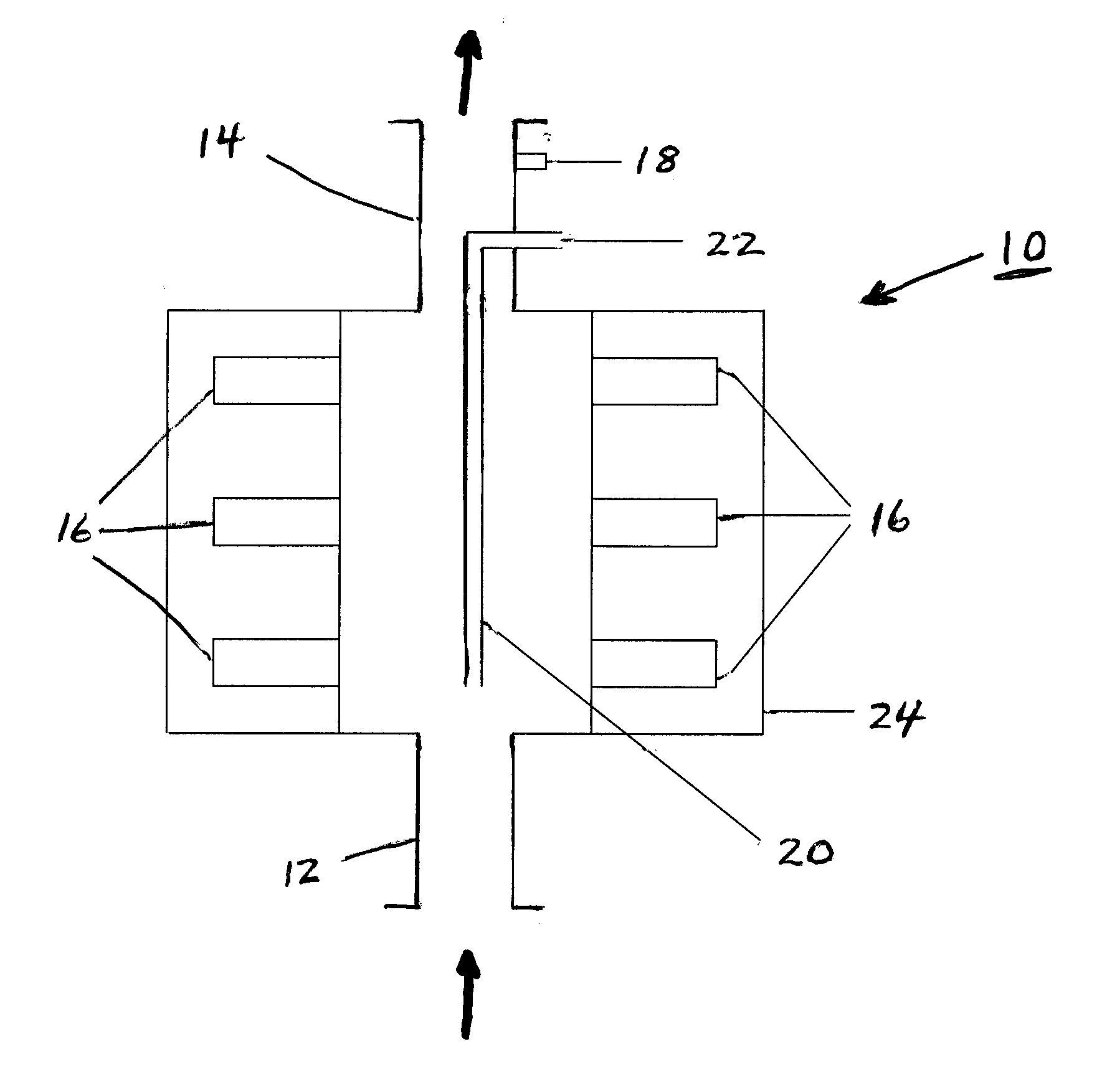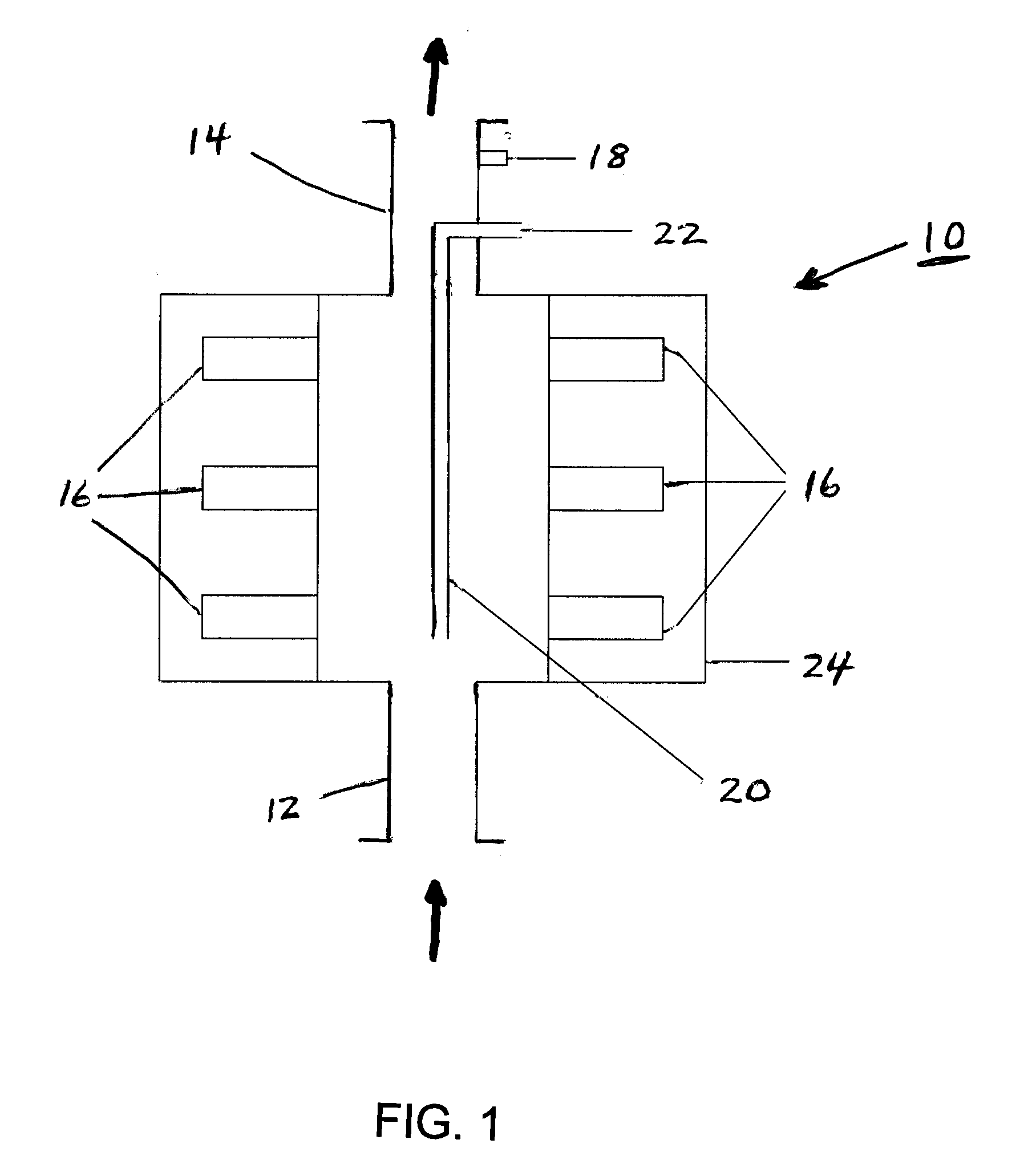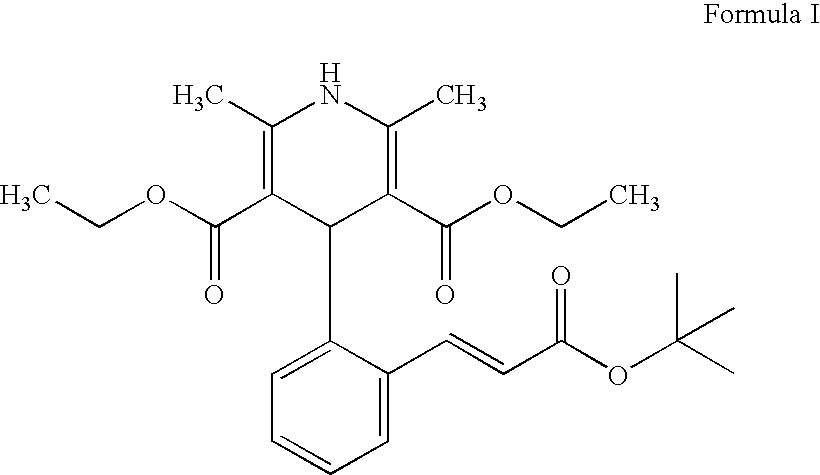Process for preparing lacidipine
a lacidipine and process technology, applied in the field of lacidipine, can solve the problems of difficult scale-up of the process, undesired products in the final product, etc., and achieve the effect of high yield
- Summary
- Abstract
- Description
- Claims
- Application Information
AI Technical Summary
Benefits of technology
Problems solved by technology
Method used
Image
Examples
example 1
PREPARATION OF TERTIARY BUTOXY CARBONYL METHYL TRIPHENYL PHOSPHONIUM BROMIDE
[0082] 30 liters of toluene was taken into a reactor and 3.2 kg of triphenyl phosphine was added to it under a nitrogen atmosphere. Another 2 liters of toluene was added to the reactor and stirred for about 25 minutes. The reaction mass was then heated to about 60° C. and 2.9 kg of tertiary-butyl bromo acetate was added to the reaction mass at 60° C. Temperature of the reaction mass was then raised to 62° C. and maintained for 4 hours. Reaction completion was checked using thin layer chromatography. After the reaction was completed, the reaction mass was cooled to about 35° C. and filtered. The filtered cake was washed with 9.5 liters of toluene. The wet solid was dried at 60° C. for 4 hours to yield 5.36 kg (96% yield) of the title compound.
[0083] Purity by HPLC: 99.1 area-%.
example 2
PREPARATION OF DIETHYL (E)-4-[2-[(TERT-BUTOXY CARBONYL) VINYL]PHENYL]-1,4-DIHYDRO-2,6-DIMETHYL PYRIDINE-3,5-DICARBOXYLATE (FORMULA I)
[0084] 18 liters of dichloromethane was taken into a reactor and 5 kg of tertiary-butoxy carbonyl methyl triphenyl phosphonium bromide (obtained using a similar process as described in Example 1) was added to it. 2.05 kg of ortho-phtalaldehyde was added to the reaction mass and another 1 liter of dichloromethane was added to it. The reaction mass was stirred for about 15 minutes and then cooled to about −5° C. A solution of 2.65 kg of sodium hydroxide flakes in 5 liters of water at about 25° C. was added to the reaction mass at −3° C. and maintained at −3° C. for 2.5 hours. Reaction completion was checked using thin layer chromatography. After the reaction was completed, the temperature of the reaction mass was raised to 25° C. and stirred for 30 minutes. The organic layer was separated from the reaction mass and distilled without vacuum at a temperat...
example 3
PURIFICATION OF DIETHYL (E)-4-[2-[(TERT-BUTOXY CARBONYL) VINYL]PHENYL]-1,4-DIHYDRO-2,6-DIMETHYL PYRIDINE-3,5-DICARBOXYLATE (FORMULA I)
[0087] 500 liters of demineralized water was taken into a reactor and cooled to 3° C. 47.3 liters of isopropanol was taken into a second reactor and 1.97 kg of lacidipine crude was dissolved in it. The solution was heated to 61° C. and maintained for 30 minutes. The demineralized water from the first reactor was fed with a flow rate of 60±2 liters per hour through a flow cell, as described above and in FIG. 1 and having an interior volume of 2 liters, for 30 minutes. The ultrasound system of the flow cell was then switched on, the feeding of water was continued at a temperature of 3° C., and simultaneously the solution of lacidipine prepared in the second reactor was fed from the reactor at 61° C. through the flow cell dip tube having outlet perforations, at a rate of 10.5 liters per hour. The resultant slurry obtained from the cell outlet was contin...
PUM
| Property | Measurement | Unit |
|---|---|---|
| Fraction | aaaaa | aaaaa |
| Temperature | aaaaa | aaaaa |
| Temperature | aaaaa | aaaaa |
Abstract
Description
Claims
Application Information
 Login to View More
Login to View More - R&D
- Intellectual Property
- Life Sciences
- Materials
- Tech Scout
- Unparalleled Data Quality
- Higher Quality Content
- 60% Fewer Hallucinations
Browse by: Latest US Patents, China's latest patents, Technical Efficacy Thesaurus, Application Domain, Technology Topic, Popular Technical Reports.
© 2025 PatSnap. All rights reserved.Legal|Privacy policy|Modern Slavery Act Transparency Statement|Sitemap|About US| Contact US: help@patsnap.com



